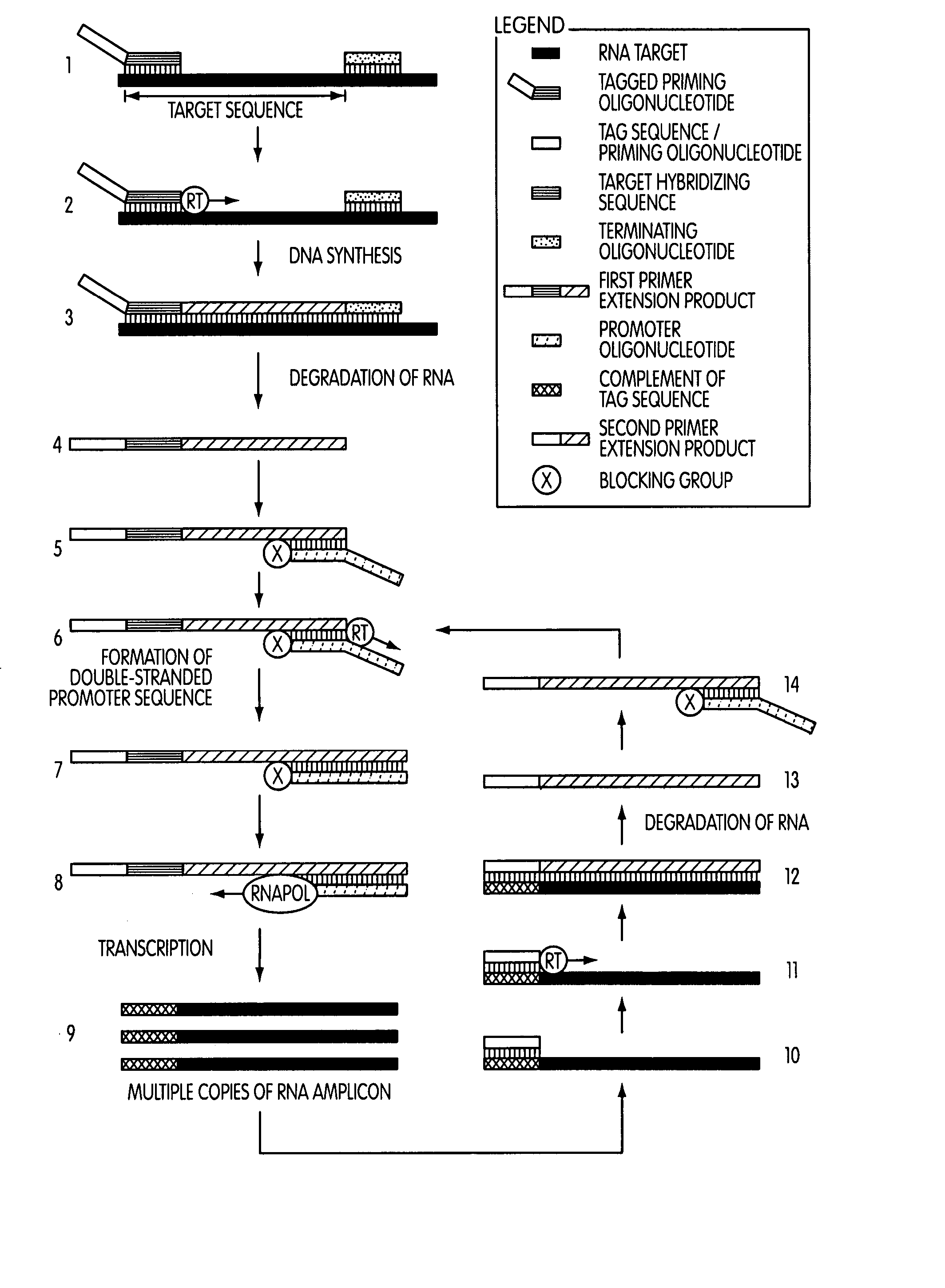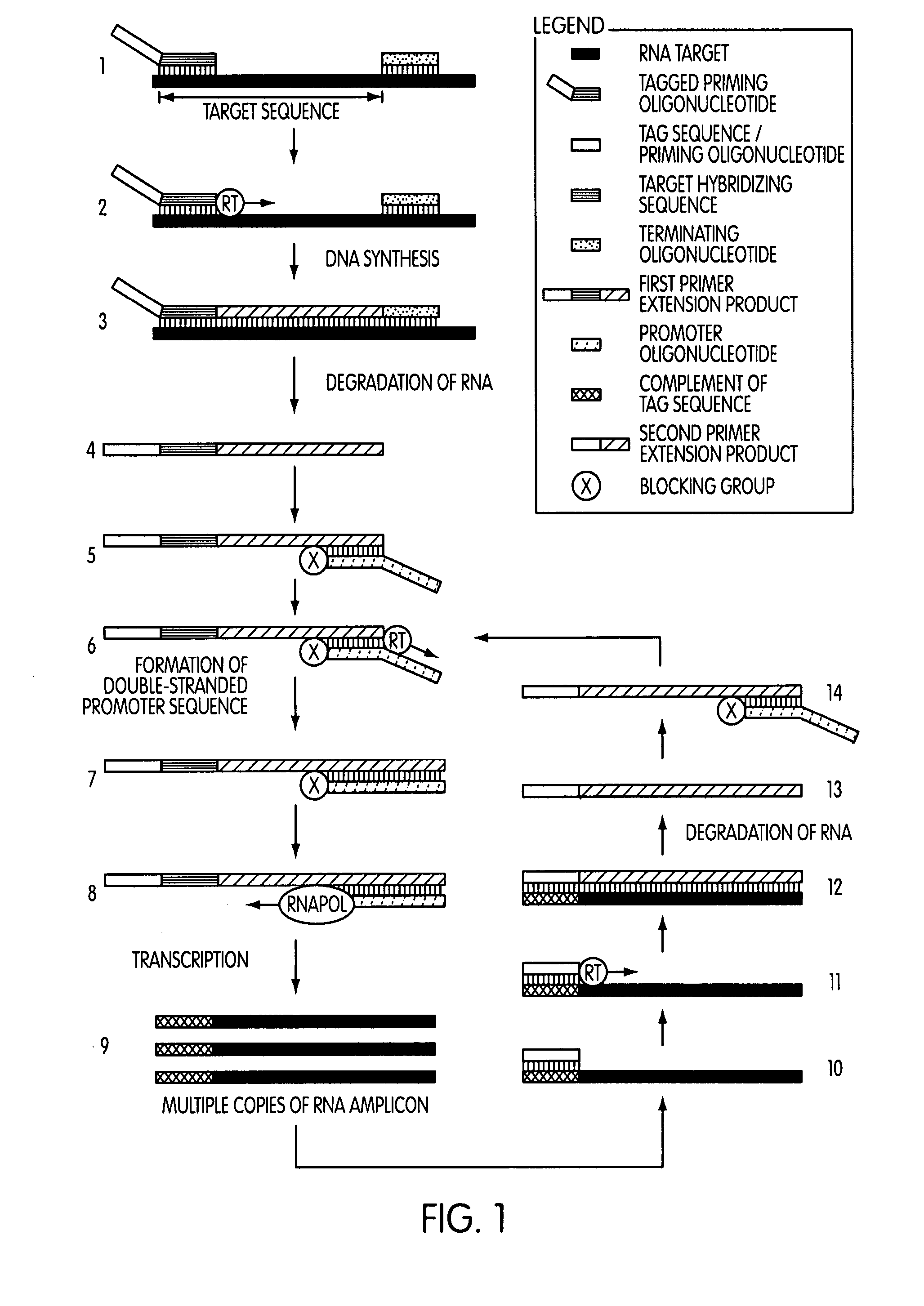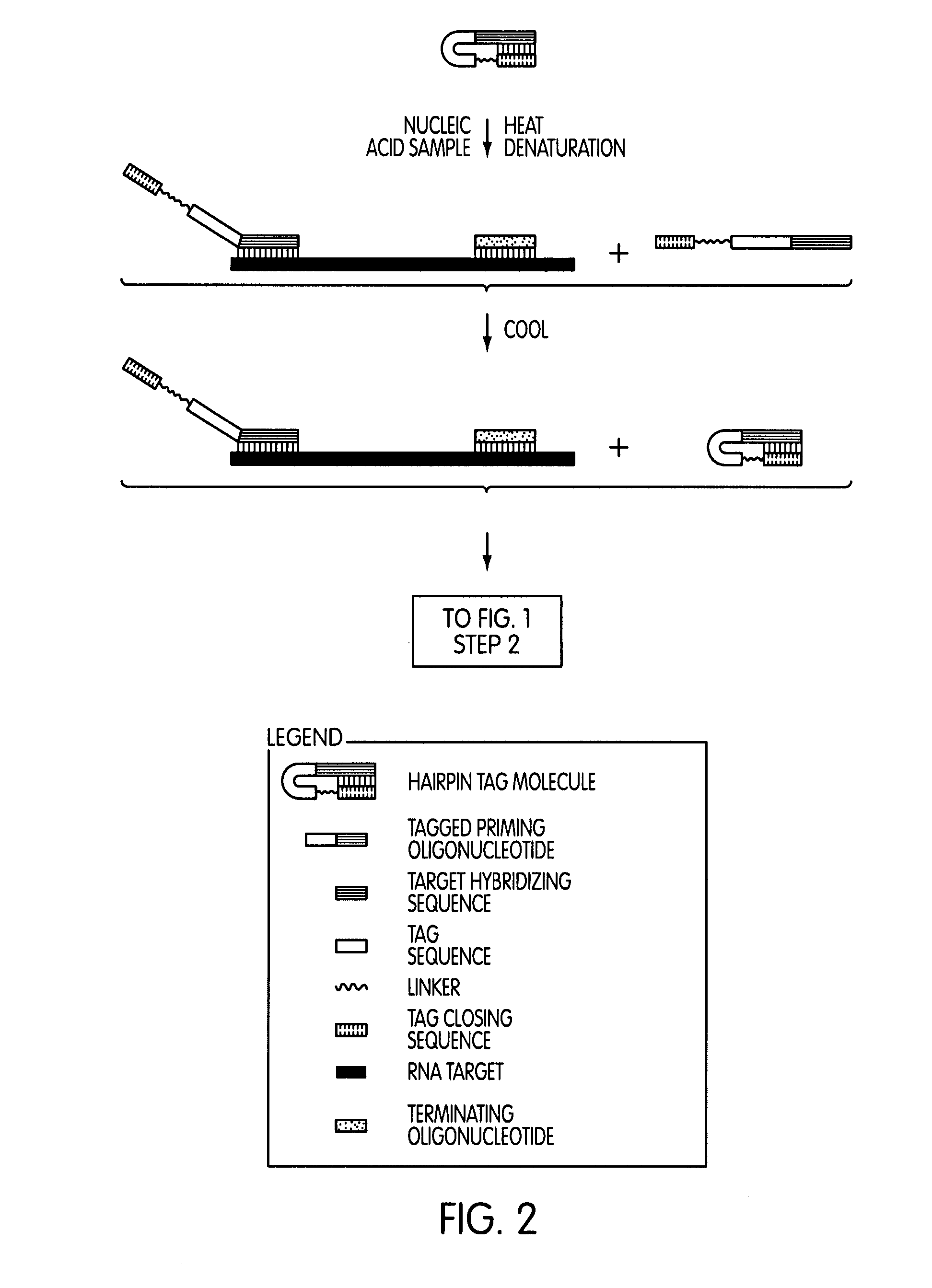Tagged oligonucleotides and their use in nucleic acid amplification methods
a technology of tagged oligonucleotides and nucleic acid, which is applied in the field of tagged oligonucleotides and their use in nucleic acid amplification methods, can solve the problems of false positive, limited acceptance of first-generation amplification assays, and limitations in certain settings, so as to reduce or eliminate false positive amplification signals and less stringent purification and/or sterility efforts
- Summary
- Abstract
- Description
- Claims
- Application Information
AI Technical Summary
Benefits of technology
Problems solved by technology
Method used
Image
Examples
example 1
Selective Amplification of HCV Using Tagged Oligonucleotides in a Real-Time TMA Reaction
[0295] The following series of experiments were conducted to evaluate whether the use of a tagged oligonucleotide to modify a target nucleic acid sequence in a nucleic acid sample of interest prior to a transcription-mediated amplification reaction would permit the selective amplification of target nucleic acid sequence contributed by the nucleic acid sample of interest, while not amplifying target nucleic acid sequence contributed by sources other than the nucleic acid sample of interest.
[0296] Reagents and protocol conditions used in the performed experiments, as well as a discussion of the results and conclusions of the experiments, are set forth below.
[0297] I. Oligonucleotides
[0298] Unless otherwise indicated, oligonucleotides were synthesized using an Expedite™ 8909 DNA Synthesizer (PerSeptive Biosystems, Framingham, Mass.) using standard phosphoramidite chemistry. See, e.g., Carruthers...
example 2
Use of Tagged Priming Oligonucleotide Allows Discrimination Between Sample-Derived Templates and Exogenous Templates
[0364] A. Amplification Using a Non-Tagged Priming Oligonucleotide without Target Capture
[0365] In a first procedure, amplification reactions employing a synthetic E. coli rRNA template were performed using a non-tagged priming oligonucleotide that hybridized to the template, a promoter oligonucleotide, a terminating oligonucleotide and a molecular torch detection probe. Reactions were primed using the synthetic template added directly into the reaction mixtures (i.e., without undergoing target capture purification) at 0 or 106 copies / reaction. A molecular torch detection probe was used to monitor amplicon production as a function of time. In the nucleotide sequences presented below, 2′-O-methyl ribose (2′-O-Me) modifications of the polynucleotide backbone are indicated by lower case “m.” Blocking moieties at the 3′ termini of the promoter oligonucleotide and termina...
example 3
Alternative Torch Designs can Improve Assay Results
[0404] Amplification reactions were conducted and monitored in a real-time format using one of three different detection probes. The synthetic template nucleic acid, non-specific capture oligonucleotide, tagged priming oligonucleotide, termination oligonucleotide, promoter oligonucleotide and tag-specific priming oligonucleotide used for performing the reactions were identical to those used in the second procedure of the preceding Example. The E. coli target hybridizing portion of the tagged priming oligonucleotide corresponded to nucleotide positions 24-57 of SEQ ID NO:14 (i.e., the target hybridizing sequence corresponding to SEQ ID NO:19). The E. coli target hybridizing portion of the promoter oligonucleotide corresponded to nucleotide positions 27-47 of SEQ ID NO:10 (i.e., the target hybridizing sequence corresponding to SEQ ID NO:20). Four replicates were run for each condition. As before, detection probe was added with the en...
PUM
| Property | Measurement | Unit |
|---|---|---|
| Temperature | aaaaa | aaaaa |
| Solution | aaaaa | aaaaa |
Abstract
Description
Claims
Application Information
 Login to View More
Login to View More - R&D
- Intellectual Property
- Life Sciences
- Materials
- Tech Scout
- Unparalleled Data Quality
- Higher Quality Content
- 60% Fewer Hallucinations
Browse by: Latest US Patents, China's latest patents, Technical Efficacy Thesaurus, Application Domain, Technology Topic, Popular Technical Reports.
© 2025 PatSnap. All rights reserved.Legal|Privacy policy|Modern Slavery Act Transparency Statement|Sitemap|About US| Contact US: help@patsnap.com



